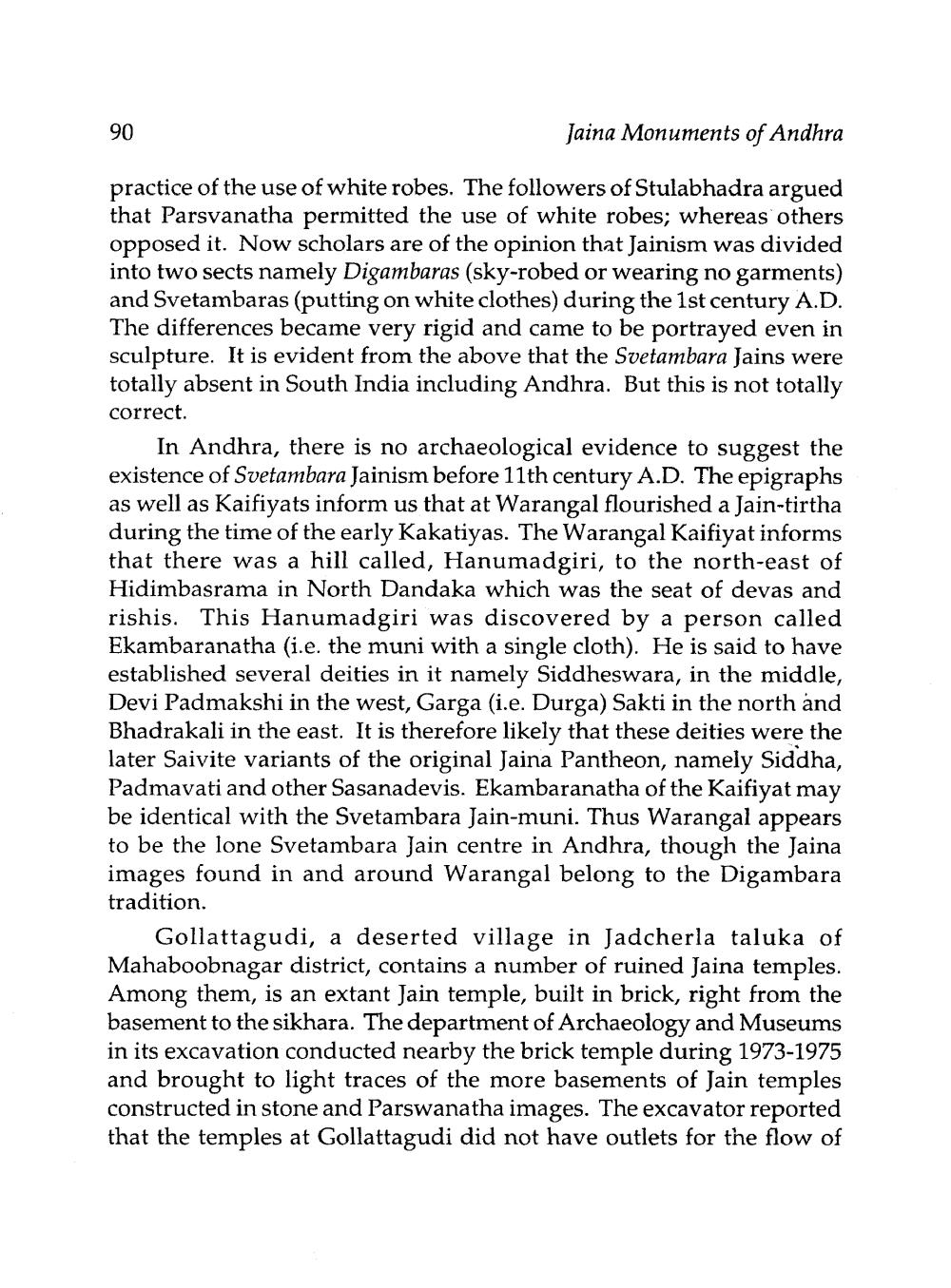________________
90
Jaina Monuments of Andhra
practice of the use of white robes. The followers of Stulabhadra argued that Parsvanatha permitted the use of white robes; whereas others opposed it. Now scholars are of the opinion that Jainism was divided into two sects namely Digambaras (sky-robed or wearing no garments) and Svetambaras (putting on white clothes) during the 1st century A.D. The differences became very rigid and came to be portrayed even in sculpture. It is evident from the above that the Svetambara Jains were totally absent in South India including Andhra. But this is not totally
correct.
In Andhra, there is no archaeological evidence to suggest the existence of Svetambara Jainism before 11th century A.D. The epigraphs as well as Kaifiyats inform us that at Warangal flourished a Jain-tirtha during the time of the early Kakatiyas. The Warangal Kaifiyat informs that there was a hill called, Hanumadgiri, to the north-east of Hidimbasrama in North Dandaka which was the seat of devas and rishis. This Hanumadgiri was discovered by a person called Ekambaranatha (i.e. the muni with a single cloth). He is said to have established several deities in it namely Siddheswara, in the middle, Devi Padmakshi in the west, Garga (i.e. Durga) Sakti in the north and Bhadrakali in the east. It is therefore likely that these deities were the later Saivite variants of the original Jaina Pantheon, namely Siddha, Padmavati and other Sasanadevis. Ekambaranatha of the Kaifiyat may be identical with the Svetambara Jain-muni. Thus Warangal appears to be the lone Svetambara Jain centre in Andhra, though the Jaina images found in and around Warangal belong to the Digambara tradition.
Gollattagudi, a deserted village in Jadcherla taluka of Mahaboobnagar district, contains a number of ruined Jaina temples. Among them, is an extant Jain temple, built in brick, right from the basement to the sikhara. The department of Archaeology and Museums in its excavation conducted nearby the brick temple during 1973-1975 and brought to light traces of the more basements of Jain temples constructed in stone and Parswanatha images. The excavator reported that the temples at Gollattagudi did not have outlets for the flow of




